
Michael Kupperman’s Tales Designed to Thrizzle and Lisa Hanawalt’s My Dirty Dumb Eyes are two books exhibiting bizarre humor and pointed takes on modern life. Tim, Kumar, and Tom Spurgeon discuss.
Podcast: Play in new window | Download

Michael Kupperman’s Tales Designed to Thrizzle and Lisa Hanawalt’s My Dirty Dumb Eyes are two books exhibiting bizarre humor and pointed takes on modern life. Tim, Kumar, and Tom Spurgeon discuss.
Podcast: Play in new window | Download
 You know that feeling when you love an artist’s work, but then you get their next one, and feel like… ehh, the magic’s gone? Tim was afraid that would be his reaction to Bryan Lee O’Malley’s Seconds but, as he discusses with Cassey this week, his fears were completely misplaced!
You know that feeling when you love an artist’s work, but then you get their next one, and feel like… ehh, the magic’s gone? Tim was afraid that would be his reaction to Bryan Lee O’Malley’s Seconds but, as he discusses with Cassey this week, his fears were completely misplaced!
Also this week, a discussion with Kenneth Kit Lamug. His picture book A Box Story won a Moonbeam Children’s Book Award, Pinnacle Book Achievement Award, a Children’s Literary Classics Seal of Approval, and was a National Indie Excellence Book Award finalist, all in 2012. Now trying his hand at comics, he recently funded a Kickstarter project for The Tall Tales of Talbot Toluca: Quest for the Ore Crystals. Tim talks with him about the Kickstarter, moving from illustration to comics, not quitting his day job, and more.
Podcast: Play in new window | Download
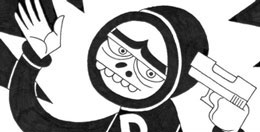 Comics conventions are changing. Some creators complain that it’s harder to sell books at cons than it once was. Distractions — cosplay, Hollywood — creep in and attract larger crowds, but don’t increase comics sales at the events. Having attended Boston Comicon in August, Paul shares the experience with Tim, and discussion ensues on problems that cons face going forward.
Comics conventions are changing. Some creators complain that it’s harder to sell books at cons than it once was. Distractions — cosplay, Hollywood — creep in and attract larger crowds, but don’t increase comics sales at the events. Having attended Boston Comicon in August, Paul shares the experience with Tim, and discussion ensues on problems that cons face going forward.
Paul did buy a couple of indy books in Boston, and we discuss them:
Podcast: Play in new window | Download
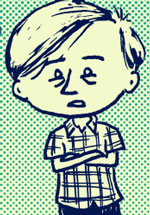 Ian McMurray‘s Square #11 is a tour de force of autobiographical cartooning, eschewing chronology, switching up styles, and closely observing himself and the things and people around him. He digs deep within himself and still makes it a fun read. Tim and Mulele discuss.
Ian McMurray‘s Square #11 is a tour de force of autobiographical cartooning, eschewing chronology, switching up styles, and closely observing himself and the things and people around him. He digs deep within himself and still makes it a fun read. Tim and Mulele discuss.
Podcast: Play in new window | Download
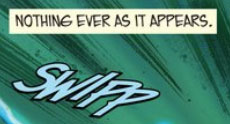
We turn our attention to comics lettering this week, and longtime letterer Rus Wooton. Rus worked on a lot of Marvel books in the 2000s, and his work can currently be seen on numerous Image titles, including Black Science (left). Tim talks with Rus about what makes lettering good or bad, how to get lettering work, the pluses and minuses of all-caps lettering vs “sentence case,” comics written and drawn by Rus, and more.
Podcast: Play in new window | Download
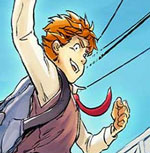 A parkour manga from Greece is the topic. A parkour manga featuring a French high school student in suburban Tokyo, and a mysterious punk-ninja-parkour gang. What could go wrong? In fact, Tim and Mulele find, surprisingly little!
A parkour manga from Greece is the topic. A parkour manga featuring a French high school student in suburban Tokyo, and a mysterious punk-ninja-parkour gang. What could go wrong? In fact, Tim and Mulele find, surprisingly little!
R.U.N. by Kariofillis Chris Chatzopoulos, Rafail Voutsidis, Lagouvardos Manos, and Nikitas Efimidis
Podcast: Play in new window | Download
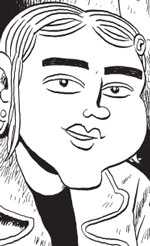 Critiquing Comics returns at last, with a look at Mike Dawson’s Angie Bongiolatti,
Critiquing Comics returns at last, with a look at Mike Dawson’s Angie Bongiolatti,
a story of twentysomethings in New York just after 9/11. The book has been published by Secret Acres, and Tim and Mulele can see why: the art and scripting are well done. And yet…something about this book is not quite there.
Podcast: Play in new window | Download
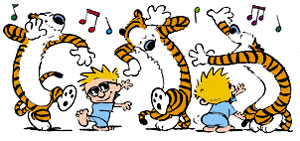 FLASHBACK! From 1985 to 1995, Bill Watterson’s Calvin and Hobbes challenged newspaper readers with imaginative stories, beautiful art, philosophical discussions, and ROTFL gags. Watterson famously eschewed commercialism, not only in the strip, but in real life, approving no C&H tie-in products other than books of strips and a calendar or two. Tim and Kumar discuss this game-changing strip and how relevant it remains today.
FLASHBACK! From 1985 to 1995, Bill Watterson’s Calvin and Hobbes challenged newspaper readers with imaginative stories, beautiful art, philosophical discussions, and ROTFL gags. Watterson famously eschewed commercialism, not only in the strip, but in real life, approving no C&H tie-in products other than books of strips and a calendar or two. Tim and Kumar discuss this game-changing strip and how relevant it remains today.
Originally published September 6, 2010
Podcast: Play in new window | Download
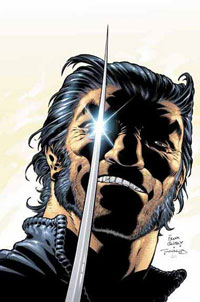 In the world of corporate comics, creators are challenged to put together a run on a given book that will stand out against everything that’s come before in that book, and leave a mark on the series that will last well beyond their run. Grant Morrison’s New X-Men run, from 2001 to 2004, met that challenge. In the ten years since he left the book, several characters and situations he set up have endured, including Fantomex, the Stepford Cuckoos, and Scott Summers’ relationship with Emma Frost. Morrison had a good handle on all his characters, old and new, and introduced the new ones in a way that made us care about them, something that certain comics writers have failed to do.
In the world of corporate comics, creators are challenged to put together a run on a given book that will stand out against everything that’s come before in that book, and leave a mark on the series that will last well beyond their run. Grant Morrison’s New X-Men run, from 2001 to 2004, met that challenge. In the ten years since he left the book, several characters and situations he set up have endured, including Fantomex, the Stepford Cuckoos, and Scott Summers’ relationship with Emma Frost. Morrison had a good handle on all his characters, old and new, and introduced the new ones in a way that made us care about them, something that certain comics writers have failed to do.
Of course, it’s not perfect. The X-men going public seemed to be the biggest event of the run — somehow overshadowing the slaughter of six million mutants on Genosha. The art was inconsistent — great when Frank Quitely was on it, but questionable some other times. This week Tim and Kumar examine Morrison’s run, particularly the initial “Cassandra Nova” arc.
Podcast: Play in new window | Download
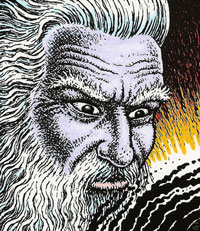 Perhaps one of the most puzzling comics releases in years was The Book of Genesis, Illustrated by R. Crumb. While it’s a virtuoso art performance, the exact purpose of the book was puzzling to Crumb fans (“It’s not a parody?!”) and religious readers (“This comic is not for kids?!”) alike. Both groups have been taken aback by how straight Crumb plays it — neither parodying nor bowdlerizing the work. That’s not to say that nothing in it is Crumb’s own interpretation. Tim and John discuss the issues raised — both by Crumb and by his audience.
Perhaps one of the most puzzling comics releases in years was The Book of Genesis, Illustrated by R. Crumb. While it’s a virtuoso art performance, the exact purpose of the book was puzzling to Crumb fans (“It’s not a parody?!”) and religious readers (“This comic is not for kids?!”) alike. Both groups have been taken aback by how straight Crumb plays it — neither parodying nor bowdlerizing the work. That’s not to say that nothing in it is Crumb’s own interpretation. Tim and John discuss the issues raised — both by Crumb and by his audience.
Podcast: Play in new window | Download